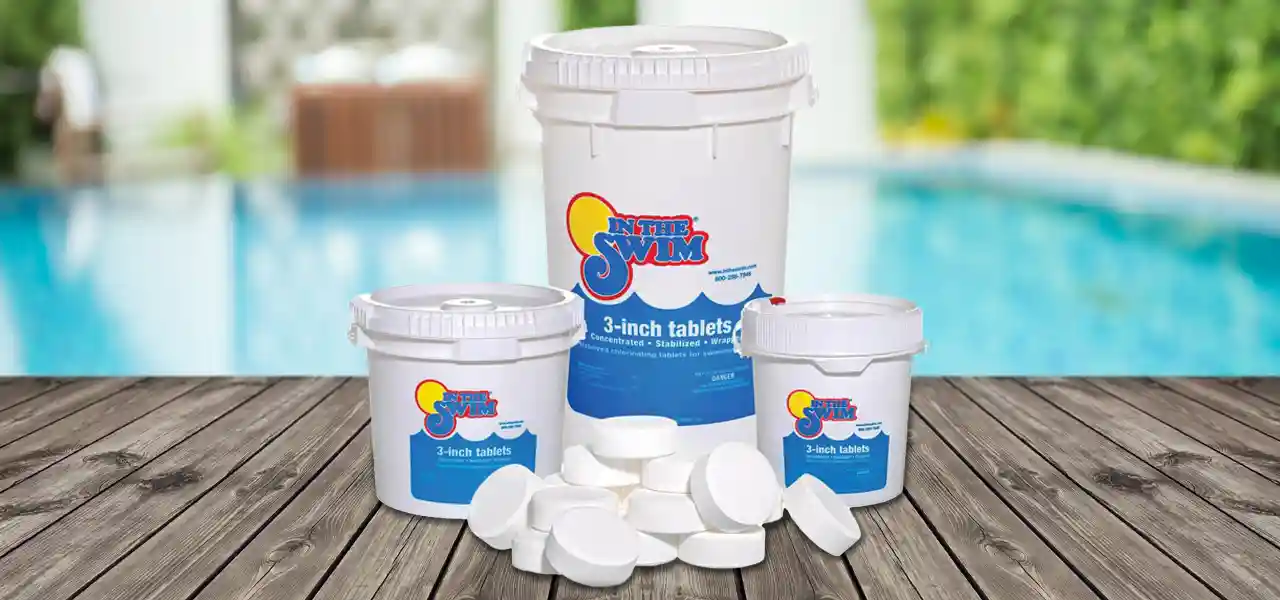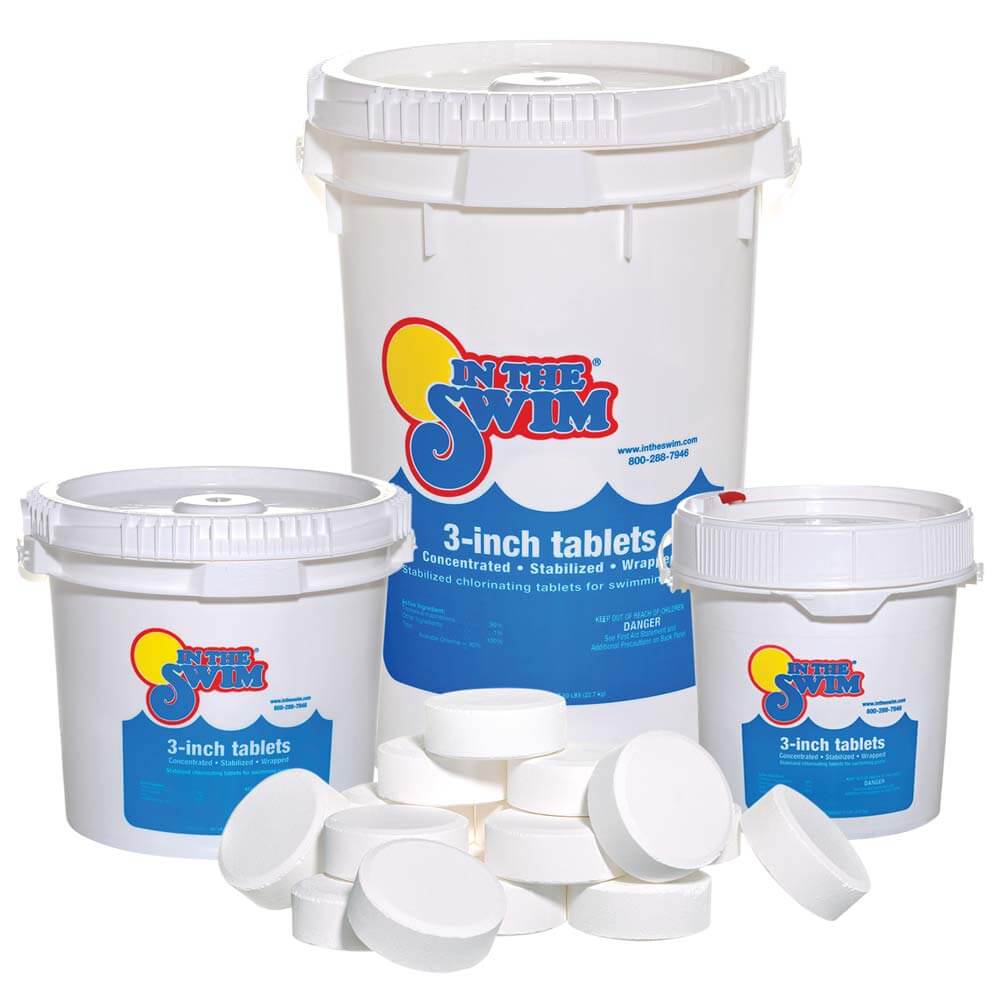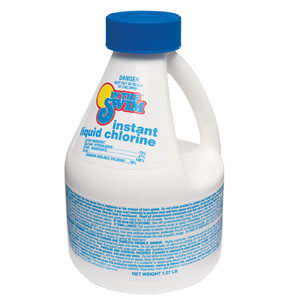FREE Standard Shipping On All Orders $100 or More!*

What Pool Chlorine Type is Best for Your Pool?
First, let me put two misconceptions to rest. Chlorine for aboveground pools is the same as chlorine for in-ground pools and there is no one best chlorine for a particular pool type.
However, there are many types of chlorine, so let's determine what type of chlorine is best for you. Some of the choice comes down to preference. Starting out, though, let’s get to the basics of what chlorine types are available.
Pool chlorine can be either stabilized or unstabilized. When many pool owners hear that their chlorine is unstabilized it conjures up images of beakers exploding in laboratories. With chlorine, however, this refers to the addition of a chemical called cyanuric acid to the chlorine. CYA shields the Cl2 molecule from the sun, sort of like sunscreen, stabilizing your chlorine.
The first question should be: Is your pool indoors or outdoors? Indoor pools don't really need stabilized chlorine, and neither do portable spas. For this reason, and the greater stability at fluctuating pH levels, these types may benefit from using bromine, a close cousin to chlorine.
Types of Stabilized Pool Chlorine

1-inch tablets, 3-inch tablets, and slow-dissolving sticks are the exact same chemical compound (Trichloro-S-Triazinetrione). So whether you call it a tablet, a puck or a stick you are getting the exact same product. If you have an outdoor pool you need the stabilized chlorine and per pound, the 3-inch chlorine tablets are the cheapest. Additionally, if you are using a chlorine feeder most are designed for the 3-inch chlorine tablets. To get the most chlorine in your feeder at one time use the 3-inch tablets.
Why would you use the 1-inch tablets or chlorine sticks? This comes down to surface area; when you place the 1-inch tablets or sticks in your feeder they don't line up as smoothly as the 3-inch tablets do. This gives more surface area for water to erode the tablets, thus increasing the chlorine level more quickly. One-inch tablets are used to chlorinate spas or very small pools, for which a 3-inch chlorine tablet may be too large. One-inch tablets also are great for very large pools, because of the faster dissolution rate.
The other form of stabilized chlorine is di-chlor pool shock. Our Di-Zap granular has stabilizer in the chemical compound (SodiumDichloro-S-Triazinetrione). Stabilized chlorine shock or granular should have 56 percent available chlorine, compared with non-stabilized cal-hypo pool shock, which has 65% or 73%. What it lacks in potency it makes up by having virtually no effect on your pool water's pH level.
Types of Non-Stabilized Pool Chlorine

Liquid chlorine (sodium hypochlorite), popular in many parts of the country, has some complications in its use.
- It is only 10-15 percent available chlorine and has more sodium than chlorine.
- It is the fastest acting due to the fact that it is pre-dissolved.
- It is unstabilized or unprotected against the sun's UV rays.
- It requires a specialized feeder or the pool owner to pour it into the pool.
- Pouring it directly into the pool will create peaks and valleys of chlorination.
- Increases pH Levels dramatically, with a pH level of 13.
- Its shelf life is rather short; within six to 12 months it can degrade by up to 50%.
Pool shock can also come in other granular forms that are not stabilized, such as calcium hypochlorite. Cal Hypo, as it's called, has a higher level of available chlorine, at 65%, but is not stabilized, or protected from the sun. Non-chlorine shock, usually potassium monopersulfate, is unstabilized because it's, chlorine-free.
All pool shock granular products should be used for superchlorination and not as an everyday chlorinating method. The burn rate is fast, and your pool will soon be hungry for more.
One thing all chlorine types have in common is that when they dissolve in water, they produce hypochlorous acid, which is the active ingredient in chlorine. Without it, contaminants, organic matter, viruses and pathogens begin to grow in any untreated body of water.
Keep in mind the following safety information about pool chlorine:
- Never mix different chlorine types together. They will react violently.
- Follow all label instructions when transporting, storing and using chlorine.
- Never allow dirt or any foreign substance or debris to contact chlorine.
- Keep chlorine in a cool, dry location, away from children.
- Never allow any other pool chemical to come in contact with chlorine.
So, to the question "What type of chlorine is right for me?", consider your pool size and location. Buy the best chlorine at the lowest price, look for a low-cost stick or tablet, from a company you like, and you'll be fine.
Enjoy your pool!